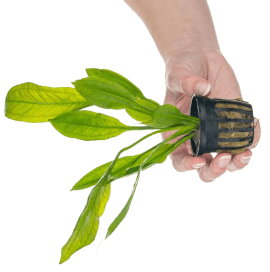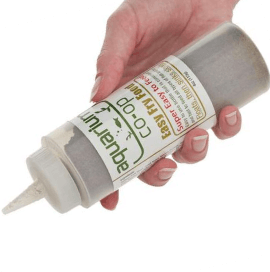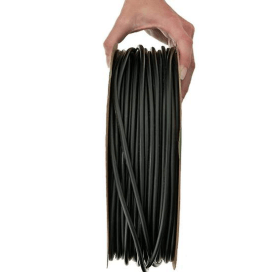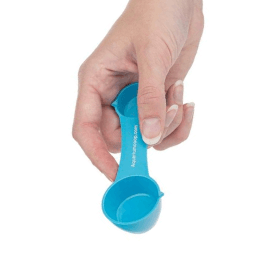Air Stones: The Secret Weapon Every Aquarium Needs
Having enough oxygen in your aquarium is one of those things people often take for granted, but it’s so vital to your fish’s health. How can you make sure your fish is getting enough air? Typically, the most obvious signs of oxygen deprivation in fish include lots of resting at the bottom of the tank, a lack of appetite, and rapidly moving gills. In a worst-case scenario, your fish may start gasping for air at the surface of the water, which means it’s definitely time to take action!
The first step is to do a large water change, which will immediately infuse the tank with fresh oxygen. If the fish immediately perk up, the second step is to determine why the aquarium was suffering from lack of oxygen. Common causes include high water temperatures, too many fish in the tank, certain medications or chemical treatments, and not enough water surface agitation.
How do I Get More Oxygen in My Fish Tank?
You can directly measure the dissolved oxygen content using a water test kit or digital meter. Ideally, the oxygen content in a freshwater fish tank should be around 7 to 8 ppm (or mg/L). To figure out the best kind of setup for increasing oxygen in your aquarium, we ran several experiments using a dissolved oxygen meter and here’s what we discovered:

The experiment results for increasing dissolved oxygen in different aquarium setups
Note: Powerheads and circulation pumps were also tested, but the exact results were not recorded. The venturi-type powerhead did not perform as well as the powerhead pointed towards the top of the tank that created surface agitation. A circulation pump was also tested, but it did not improve the oxygen content significantly.
Based on our experiments, we definitely see that increasing gas exchange at the water surface has a positive impact on oxygen content. Gas exchange in aquariums is the process in which carbon dioxide from the water (a waste product produced by your fish) exits into the air and new oxygen from the air is dissolved into the water. Given this information, here are three proven ways to increase oxygenation in your aquarium:
-
Buy tanks with a large surface area.
When using only a sponge filter in the 40-gallon tank versus 55-gallon tank, the 40-gallon tank had much higher oxygen content. The reason is because the 40-gallon breeder tank has a greater amount of surface area compared to the 55-gallon tank. Therefore, a long, shallow aquarium is preferred over a tall, narrow one.
-
Don’t let floating plants cover the water surface.
When using a sponge filter in the 55-gallon tank, the experiment with floating plants had significantly less oxygen compared to the experiment without them. In general, live aquarium plants can be very useful in producing additional oxygen for your fish. However, don’t let floating plants take over your entire tank because it limits the amount of gas exchange.

Too many floating plants can greatly reduce oxygen levels in your fish tank.
-
Increase surface agitation with filtration and air stones.
Good surface agitation is clearly the key to effective gas exchange where carbon dioxide in the water is swapped out for more oxygen from the air. One of the best ways to do this is by adding at least one air source (like an air stone or sponge filter) to every aquarium, no matter what other filtration you’re using. You can achieve good surface agitation using other methods like a hang-on-back filter, but it comes at the cost of having very loud splashing sounds from the falling water.
How to Add Air to Your Aquarium
Adding an air source to your fish tank is very easy – all you need is an air pump to push air into the water, airline tubing for the air to travel through, and a check valve to prevent water from flowing into the tubing.

How to attach an air pump in an aquarium
Those three components reside outside of the aquarium, but the last bit of airline tubing (on the left-hand side) enters the water. From there, there are several types of attachments you can connect to the airline tubing inside the aquarium.
- An air stone is a small weighted bubbler that produces very small bubbles in the water. This simple accessory helps to gradually diffuse air into the tank and minimizes the amount of bubbling noise you’ll hear.
- A sponge filter uses air to provide mechanical and biological filtration. As the bubbles rises from the bottom of the sponge to the top, water is sucked in through the sponge walls, thus removing waste particles and clearing up the water. Beneficial bacteria also like to live in the sponge, helping to covert waste compounds into safer by-products.
- A moving bed filter creates an optimal environment for biological filtration. As air travels through the chamber of swirling media granules, the constant churning of oxygenated water greatly enhances growth of beneficial bacteria.

Add more air to your aquarium using an air stone, sponge filter, or moving bed filter.
All these methods of adding air to your fish tank promote excellent surface agitation and oxygenation of water, providing an ideal, stress-free environment for your fish to live in.




